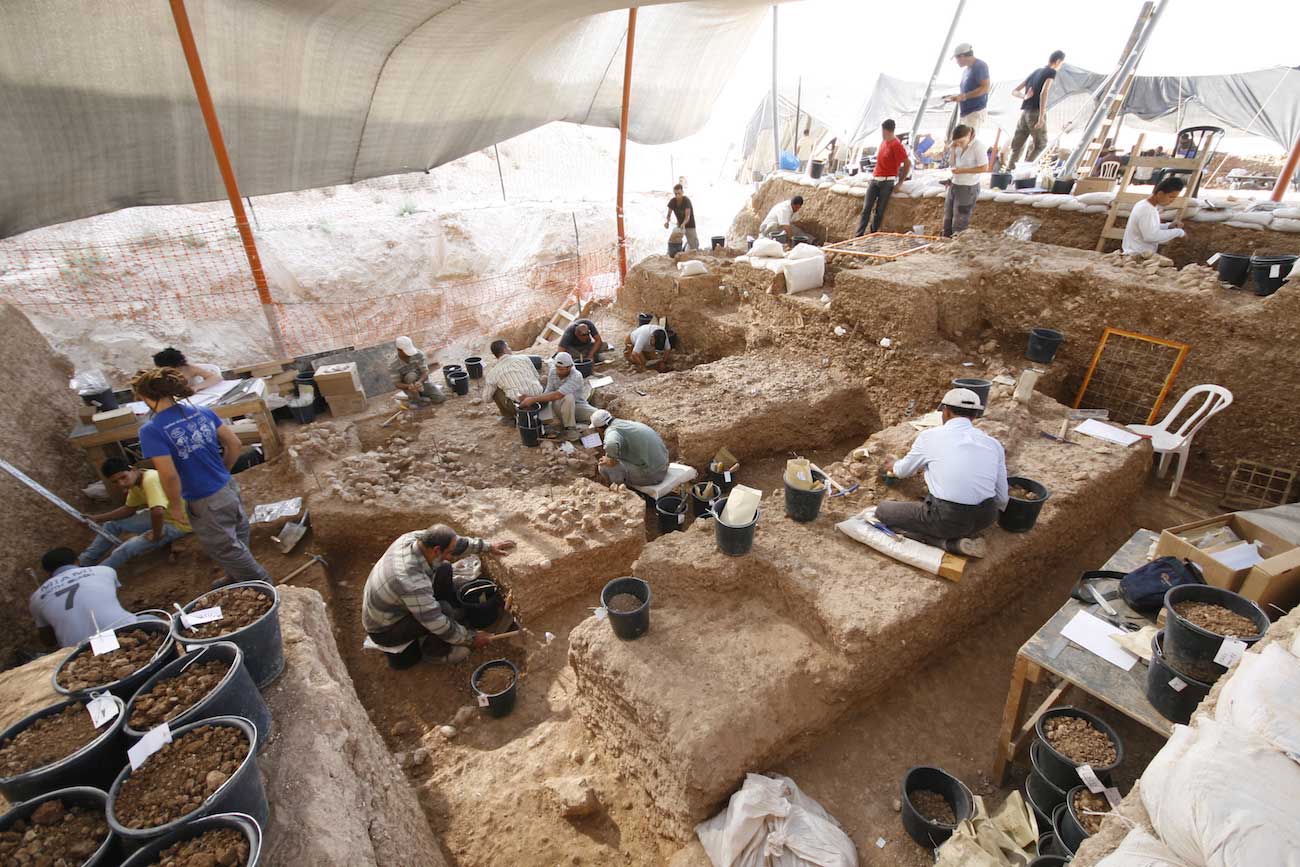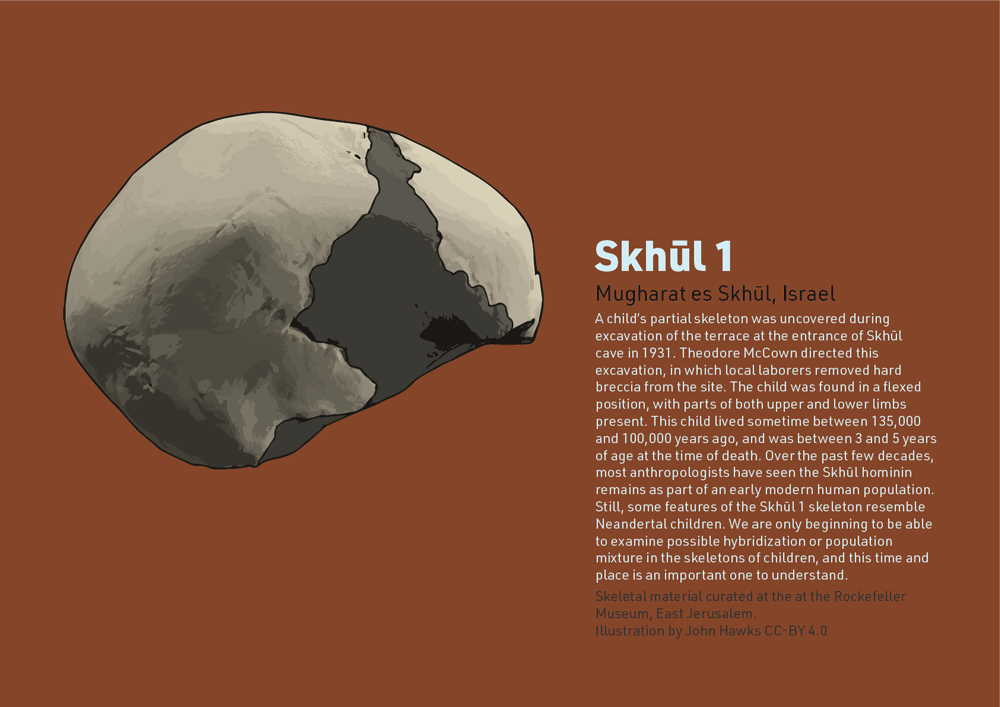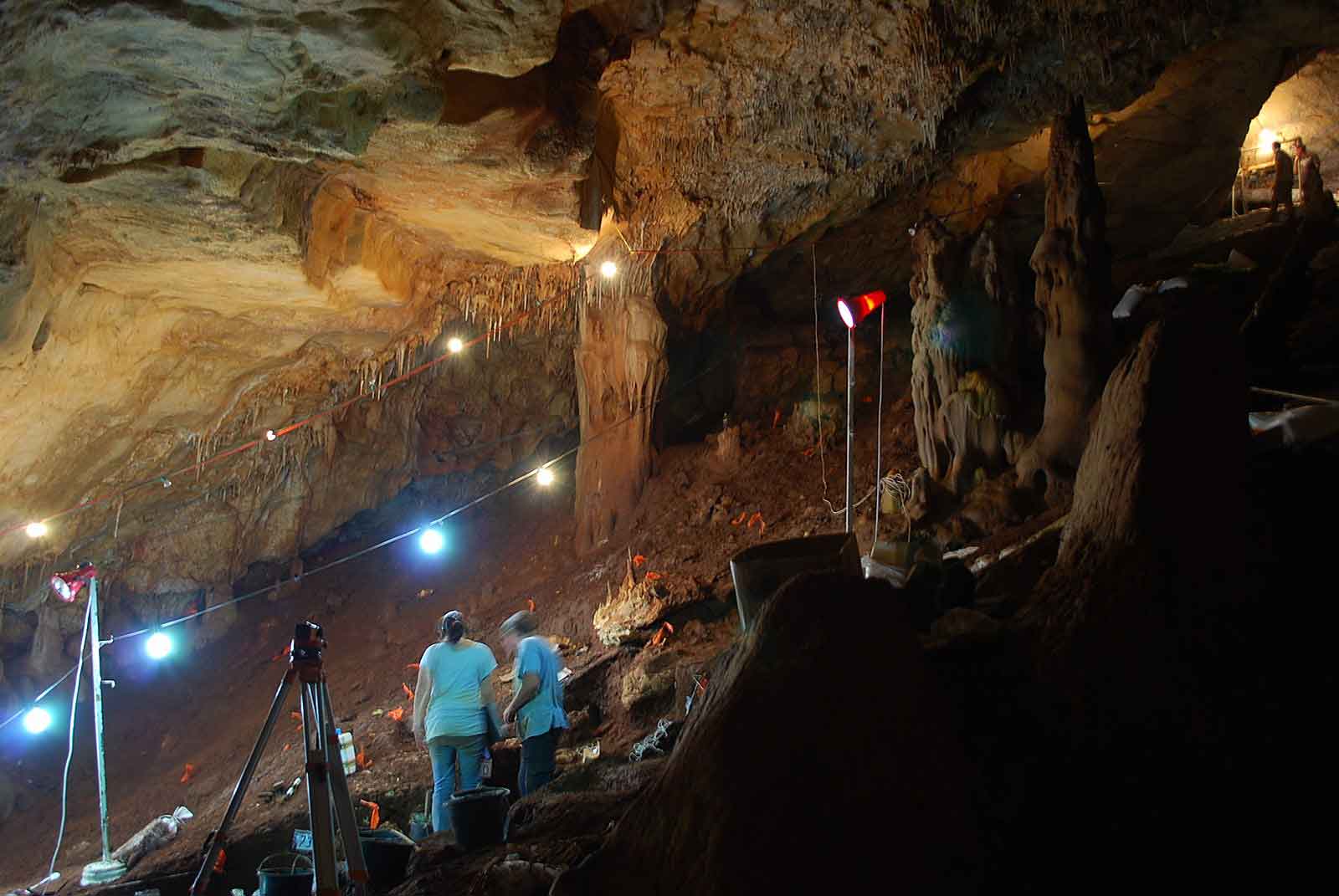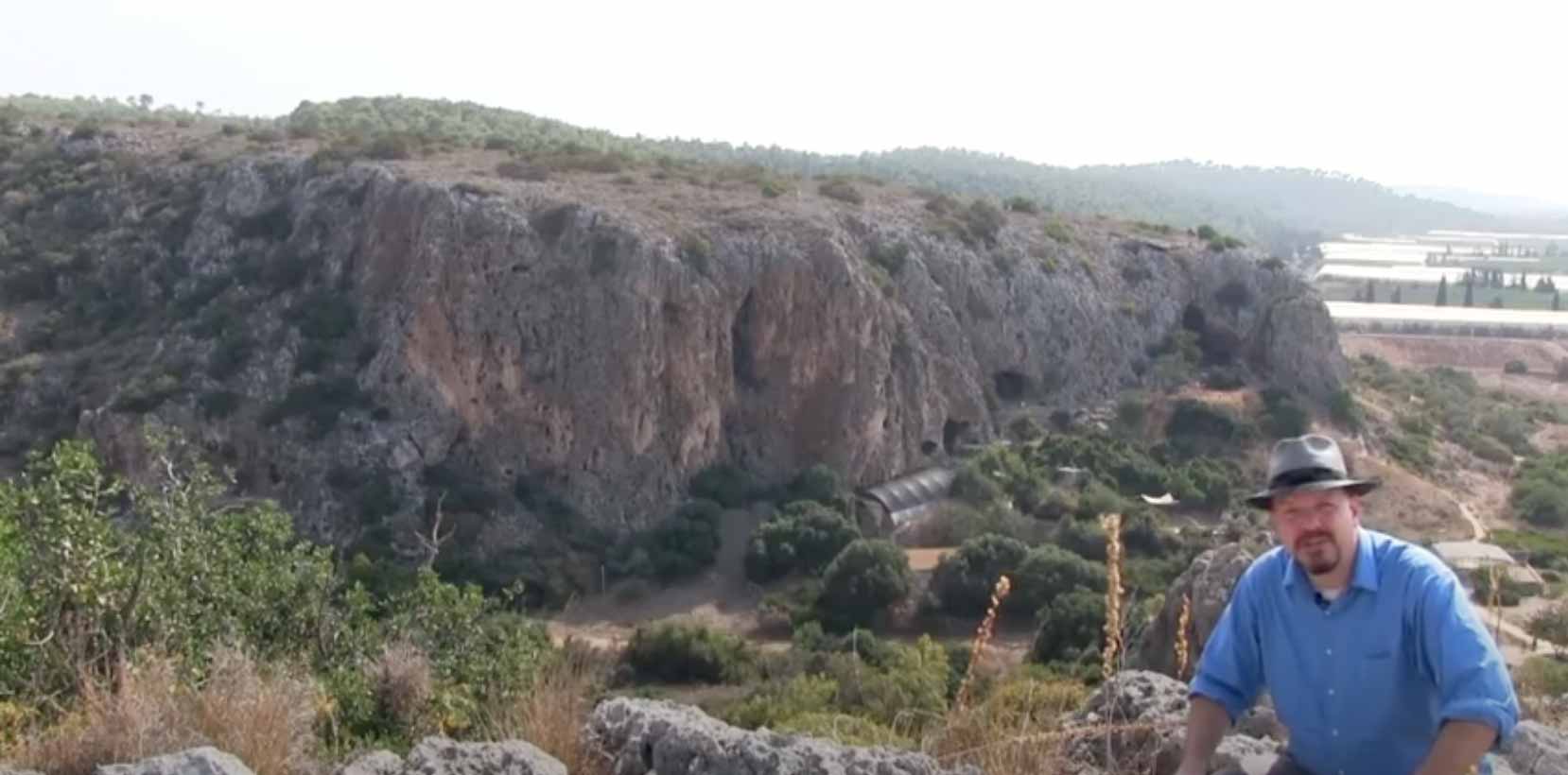Israel
The Nesher Ramla site: a third way between Neandertals and modern humans?
Fragments representing people who lived just before Skhūl and Qafzeh seem outside the expectations for these “early modern humans” or for Neandertals.

Fossil profile: Skhūl 1 and the mixing of populations
A child's skull from Mount Carmel gives an occasion to look at the history of ideas about population mixture.

The Manot 1 skull and how we now look at Neandertal ancestry in early modern humans
The discovery of a 54,000-year-old skull in Israel sheds light on the dispersal of modern humans and their contacts with Neandertals.

Becoming human: Presentation on Mount Carmel sites and cultural origins
A visit to Israel occasions reflections on the cultural evolution of humans and Neandertals.

Remarkable preservation of an Acheulean campsite at Gesher Benot Ya'aqov
My notes on a publication describing evidence for cooking and eating fish, crabs, and plants
